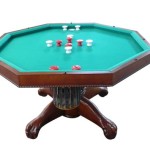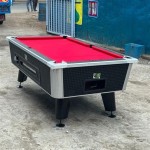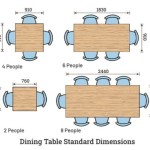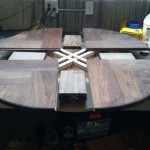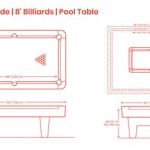DIY Wood Table Base Ideas: Free Plans and Inspiration
Creating a custom table base is a rewarding DIY project, offering the opportunity to design furniture that perfectly complements a specific aesthetic and meets precise dimensional requirements. Wood, with its versatility and inherent beauty, is a popular choice for table bases. A significant advantage of building a wood table base is the availability of numerous free plans and design ideas online, allowing individuals to execute personalized designs without incurring substantial upfront costs.
This article explores a range of DIY wood table base ideas, focusing on readily accessible free plans and the fundamental considerations involved in constructing a stable and aesthetically pleasing structure. The information presented aims to equip individuals with the knowledge needed to embark on their own DIY table base projects.
Understanding Structural Integrity and Design Considerations
Before commencing any DIY table base project, it is imperative to understand the principles governing structural integrity. The base must be capable of supporting the weight of the tabletop and any anticipated load without buckling, wobbling, or experiencing premature wear. Several factors contribute to structural soundness, including wood selection, joint construction, and overall design.
Wood Selection: The choice of wood species directly impacts the strength and durability of the table base. Hardwoods, such as oak, maple, and walnut, are generally preferred for their density and resistance to deformation. Softwoods, such as pine and fir, can be suitable for smaller tables or designs where aesthetics outweigh structural demands. It is crucial to ensure the wood is properly dried and free from defects like knots or warping, which can weaken the structure.
Joint Construction: The method used to join the various components of the table base significantly influences its stability. Common joinery techniques include mortise and tenon joints, dowel joints, pocket hole joints, and lap joints. Mortise and tenon joints, particularly when reinforced with glue, offer exceptional strength and are ideal for load-bearing connections. Dowel joints provide a simpler alternative, while pocket hole joints are suitable for less critical connections or when speed and ease of assembly are prioritized. Lap joints are frequently used to create a flush surface where two pieces of wood overlap.
Design Considerations: The overall design of the table base plays a crucial role in its stability. A wider base generally provides greater stability, especially for larger tabletops. The angle of the legs also affects stability; splayed legs, angled outward, tend to resist tipping better than straight legs. Additionally, the presence of stretchers, horizontal supports connecting the legs, significantly enhances rigidity and prevents racking. The height of the table base must be appropriate for its intended use, taking into account the tabletop thickness and the desired clearance for seating.
Exploring Free DIY Table Base Plans
The internet offers a plethora of free DIY table base plans, catering to various skill levels and design preferences. These plans typically include detailed instructions, material lists, and dimensional diagrams, streamlining the construction process. Several categories of table base designs are particularly popular and well-documented.
Trestle Table Base: A trestle table base consists of two or more upright supports connected by a horizontal beam. This design is characterized by its rustic charm and ease of construction. Free plans for trestle table bases are readily available, often utilizing readily accessible lumber and simple joinery techniques. The design typically incorporates wedges or bolts to secure the tabletop to the trestles, allowing for easy disassembly and transport.
Pedestal Table Base: A pedestal table base features a single central support, typically constructed from a combination of vertical posts and radiating arms. This design offers ample legroom and a clean, contemporary aesthetic. Building a pedestal table base can be more challenging than a trestle base, requiring precise cuts and strong joinery to ensure stability. Free plans for pedestal table bases often incorporate decorative elements, such as turned posts or sculpted arms, adding visual interest to the design.
Leg Table Base: A leg table base is the most traditional design, consisting of four individual legs connected directly to the tabletop or a supporting apron. This design is highly versatile and can be adapted to various styles, from minimalist to ornate. Free plans for leg table bases are abundant, ranging from simple square legs to more complex tapered or curved designs. The legs can be attached to the tabletop using screws, bolts, or traditional joinery techniques. The inclusion of a support apron connecting the legs enhances stability and provides a surface for attaching drawers or other accessories.
Hairpin Leg Table Base: Hairpin legs are a popular choice for creating a mid-century modern aesthetic. These legs are typically made of steel rods bent into a distinctive hairpin shape, but they can also be crafted from wood. While metal hairpin legs are often purchased pre-made, it is possible to construct wooden hairpin legs using steam bending or laminated wood techniques. Free plans for tables using hairpin legs often focus on attaching the legs securely to a tabletop, emphasizing the importance of using appropriate fasteners and reinforcing the attachment points.
Essential Tools and Techniques for Wood Table Base Construction
Constructing a wood table base requires a basic set of woodworking tools and a familiarity with fundamental woodworking techniques. The specific tools required will vary depending on the complexity of the design, but the following list represents a common starting point.
Essential Tools: A table saw is essential for making accurate and consistent cuts, particularly for larger pieces of lumber. A miter saw is useful for making angled cuts, which are often required for legs and stretchers. A drill or drill press is necessary for creating holes for screws, bolts, or dowels. A sander is used to smooth surfaces and prepare them for finishing. Hand tools, such as chisels, planes, and saws, are helpful for fine-tuning joinery and creating decorative details. Clamps are essential for holding pieces together while glue dries.
Essential Techniques: Accurate measuring and marking are crucial for ensuring the pieces fit together properly. Cutting wood cleanly and precisely is essential for creating strong and aesthetically pleasing joints. Assembling the pieces carefully, using glue and fasteners as needed, is critical for structural integrity. Sanding the surfaces smooth before applying a finish enhances the appearance and feel of the table base. Applying a protective finish, such as varnish, lacquer, or oil, protects the wood from moisture and wear, extending its lifespan.
Finishing Options: The choice of finish impacts the appearance and durability of the table base. Common finish options include varnish, which provides a durable and water-resistant surface; lacquer, which creates a smooth and glossy finish; oil, which enhances the natural beauty of the wood; and paint, which allows for a wide range of colors and textures. The selection of the finish depends on the desired aesthetic and the intended use of the table. It is important to prepare the wood surface properly before applying any finish, ensuring it is clean, smooth, and free from dust. Multiple coats of finish are often required to achieve the desired level of protection and appearance. Sanding lightly between coats can improve the smoothness of the finish.
Before starting the project, individuals should carefully review the chosen plans, gather all necessary materials and tools, and familiarize themselves with the relevant woodworking techniques. Working in a well-ventilated area and wearing appropriate safety gear, such as eye protection and a dust mask, is essential. Taking the time to plan and execute the project carefully will result in a durable and aesthetically pleasing wood table base that can be enjoyed for years to come.
The creation of a DIY wood table base is a testament to individual creativity and craftsmanship. The availability of free plans provides a wealth of inspiration and guidance, enabling individuals to design and build furniture that reflects their personal style and functional needs. By carefully considering structural integrity, design aesthetics, and woodworking techniques, anyone can successfully complete a DIY table base project and add a unique and personalized touch to their home.

Outdoor Table With X Leg And Herringbone Top Free Plans

Free Woodworking Plans To Build A Fabulous Folding Table The Design Confidential

Diy X Base Dining Table With Free Plans

More Like Home Day 2 Build A Casual Desk With 2x4s

Diy Farmhouse Table Free Plans Rogue Engineer

Free Diy Furniture Plans To Build A Pb Inspired Toscana Table The Design Confidential

Farmhouse Table How To Make A Home Diy On Cut Out Keep

Outdoor Table With X Leg And Herringbone Top Free Plans

Round Table Base Free Woodworking Plan Com
:max_bytes(150000):strip_icc()/housefulofhandmade-2206fefc058449c593f4d964898c1288.jpg?strip=all)
18 Diy Outdoor Table Plans

